Combat Used AN6531 WWII Aviator Sunglasses – But Who was Captain M.D. Butler?
Contractors made an enormous amount of materials for the U.S. Army and Navy during WWII. According to American Optical’s website: “Between 1943 and 1944, a total of 10 million goggles frames, 5 million pairs of sunglasses and over 6.5 million pairs of lenses were ground and polished including 1.4 million prescriptions delivered to the Armed Forces”. And that was just one company.
Because of the vast production you find unused examples of 70 year old military eyewear from time to time. Used examples can be more interesting, though.
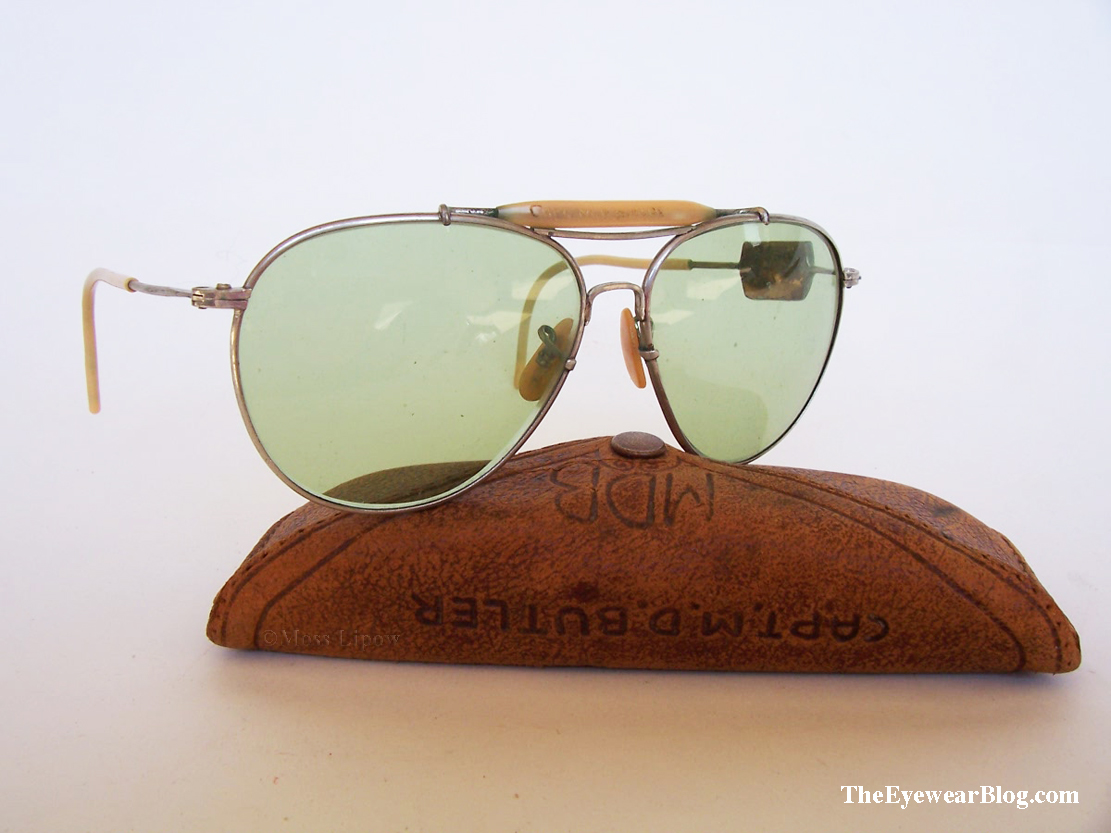
WWII aviator sunglasses. Frame by Bausch & Lomb, case by American Optical. Captain M.D. Butler has inscribed his name on the case and brow bar. Note the field repair on the left temple.
This pair of WWII aviator sunglasses is of the type issued to pilots, navigators, bombardiers and gunners in the Army Air Corps/Air Force. The Bausch & Lomb frame and American Optical leather case were a pair I purchased together. The name “M.D. Butler” was inscribed on the brow bar of the frame and on the case. One frequently sees this type of temple with Type 2 AN6531 lenses. When I got them the original AN6531 lenses had been replaced by bifocal lenses with a type 1 green tint. I assume Captain Butler kept them into civilian life and old age.
What’s interesting is the left temple has a field repair. If a temple broke in action replacement sunglasses and temples were often unavailable, so repairs had to be affected with whatever materials were available. In this case a slab of yellow metal was welded into the broken area of the temple. Voila: good as new!
This indicates they were used in a theater of war.
I’ve sometimes been able to look up the records of the original owners of inscribed WWII militaria and been able to find out a bit about them. In this case the name Butler was so common that with no first name it was like trying to find a needle in a haystack.
I wish I knew who Captain M.D. Butler was and what he saw through these frames. The U.S. Air Corps suffered the highest casualty rates of any branch of the service. 26,000 American airmen were killed in bombing raids over Germany alone. Of course the death toll among German civilians was enormous.
One would have to think these sunglasses meant a lot to Captain Butler. He risked his life for his country in them and survived. They seem to have been a lifetime companion. Very likely he saw cities in flames through them. Here’s hoping he saw children, grandchildren and peace through them as well.


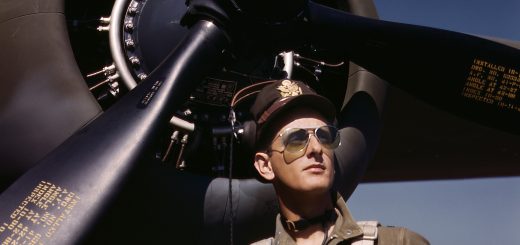
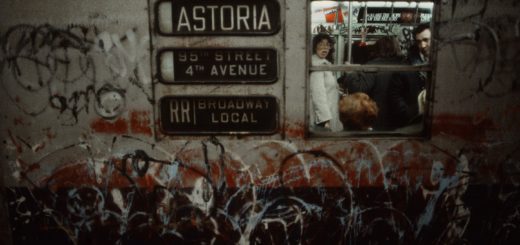
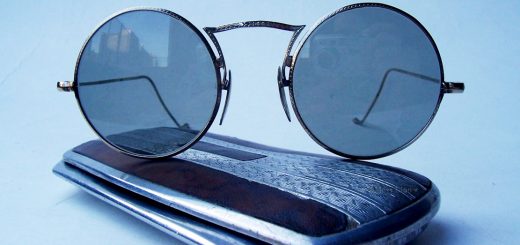
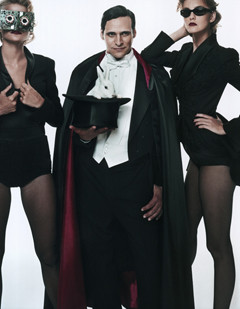
Fascinating stuff! I’ve wondered the same about the pair that were given to me by my grandfather (not originally his own, though).
Did you have to do any restoration work on yours? Mine need cleaning up (as does the metal case they came in) and I’d be interested to know what kind of work you did on yours.
No work done. The patina, nicks and other damage are part of their story. If you want to find a pair in mint condition you can. Something like this is far more interesting, in my opinion.
I am trying to research a pair of aviators that were given to me. Both my father and Uncle were military during the war. However, all I’m seeing are ones with the bridge across the top and these do not have that. They do say USAC down the middle. They are in a black metal case and in good condition. Just wondering if they were given out by military or perhaps a version that would have been purchased by public.
If they fold under the USAC plate they probably D1 aviator sunglasses, which were issued before the AN6531.
I thought I won an auction for a pair of these but now I wonder if I got knock offs.
Any way you can help me compare to these? The bridge is different but I’m wondering about the way the temples connect to the hinges. Upon arrival I can see mine is basically just a wire loop.
I suppose the dimensions of the glasses might help too.
I think the dimensions are embedded in one of the posts I made on the History of Aviator Sunglasses. Might have posted a copy of the contract. It was a while ago.
But one easy way to tell is to look at the kind of acetate used for the brow bar. Even if the dimensions are identical, the plastic on the non-milspec ones is usually sort of iridescent, whereas on contract models it’s flat in color. For other details please closely review the images in the link below. Different contractors produced different variations of the frame, as the contract was for the lens, which had the same shape from manufacturer to manufacturer.
If the pair still has original lenses, you can tell by the color. This post has more information about the lenses used, and how the lens color changed later in WWII:
http://theeyewearblog.com/who-really-made-those-wwii-aviator-sunglasses-part-5-of-our-investigation/
You don’t see the lighter green lenses on non-milspec versions.